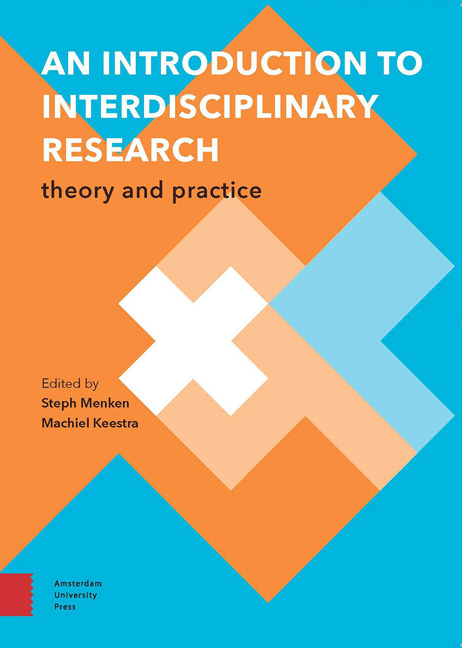Book contents
- Frontmatter
- Contents
- Acknowledgements
- Preface
- Part 1 The Handbook - ‘The What’
- 1 Introduction
- 2 What is Science? A Brief Philosophy of Science
- 3 The Disciplines
- 4 Interdisciplinarity
- 5 Complexity: The Main Driving Force Behind Interdisciplinarity
- 6 Interdisciplinary Integration
- Part 2 The Manual - ‘The How’
- 7 The Interdisciplinary Research Process
- 8 The Problem
- 9 Theoretical Framework and Research Question
- 10 How to Collect and Analyze your Data
- 11 Discussion and Conclusion(s)
- Part 3 Interdisciplinary Research in Practice
- 12 Interdisciplinary Research Example: Fogponics
- 13 Interdisciplinary Careers
- Further Reading
- References
- Colophon
8 - The Problem
- Frontmatter
- Contents
- Acknowledgements
- Preface
- Part 1 The Handbook - ‘The What’
- 1 Introduction
- 2 What is Science? A Brief Philosophy of Science
- 3 The Disciplines
- 4 Interdisciplinarity
- 5 Complexity: The Main Driving Force Behind Interdisciplinarity
- 6 Interdisciplinary Integration
- Part 2 The Manual - ‘The How’
- 7 The Interdisciplinary Research Process
- 8 The Problem
- 9 Theoretical Framework and Research Question
- 10 How to Collect and Analyze your Data
- 11 Discussion and Conclusion(s)
- Part 3 Interdisciplinary Research in Practice
- 12 Interdisciplinary Research Example: Fogponics
- 13 Interdisciplinary Careers
- Further Reading
- References
- Colophon
Summary
After the first preview of the IIS model of interdisciplinary research, we will now zoom in on the different phases and guide you through the steps of the model in more detail. In any research project, the first task at hand is to narrow down the problem or topic to a research question that can be answered in the time available. Especially in interdisciplinary research this can be a challenging step as it always involves a complex problem (see chapter 5), which can (and should be) be studied from multiple perspectives or disciplines. Here, we will describe the first two steps of our interdisciplinary research model (figure 11). How to narrow down a complex problem to a preliminary research question that is feasible in both time and scale is the central topic of this chapter.
Considerations:
□ Consider all relevant disciplines: which 3 to 4 disciplines are most relevant?
□ What are the dominant perspectives of those disciplines on the problem or area of interest?
Step 1 Identify problem or topic
Finding a topic is not always easy. An additional challenge in the case of student projects is to find a problem that can be addressed by the available disciplinary expertise in the research team (see box 5 for an exercise that you can use when trying to find a shared topic of interest). But it is equally important to find something that triggers your academic curiosity.
Once you have decided on a topic or a problem that you want to focus on in your project, you need to set a starting point for your research. The answers to the following questions can be a good starting point for your initial literature research, and they can help to clarify the context of your topic of research.
Box 5
Brainstorm exercise: Finding a shared topic of interest via ‘triangulation’
If an interdisciplinary team consists of a given combination of disciplines it may be somewhat challenging to develop a shared topic as usually scientists start with a topic and then assemble the necessary team. However, determining the ‘overlap’ between several disciplines can be done by performing a ‘triangulation’ exercise. The term triangulation refers to the process that, for example, allows mobile phone providers to precisely determine the position of your mobile phone at the intersection of three or more antennas’ areas.
- Type
- Chapter
- Information
- An Introduction to Interdisciplinary ResearchTheory and Practice, pp. 57 - 67Publisher: Amsterdam University PressPrint publication year: 2016



